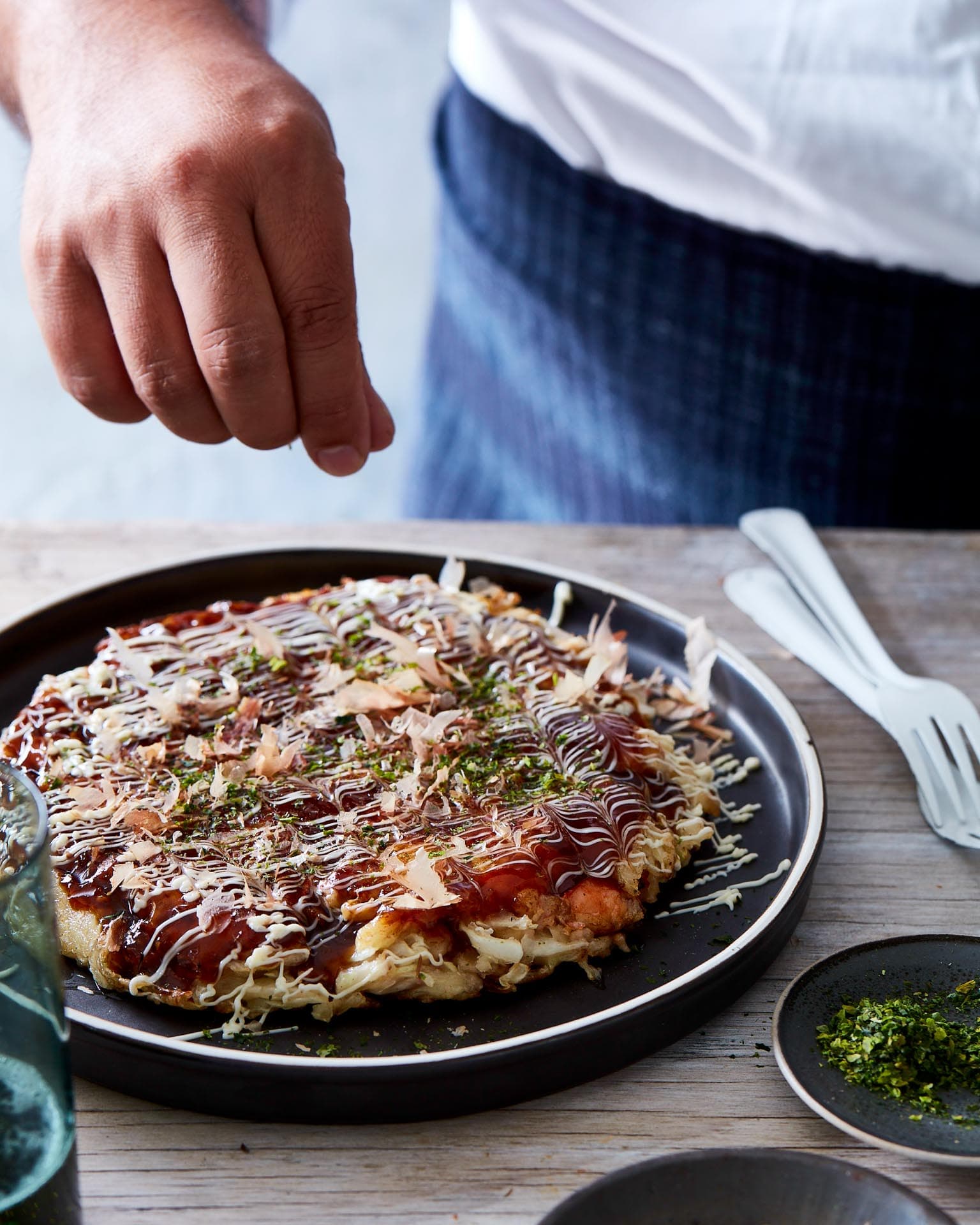Okonomiyaki
Japanese Classics

As close cousins, takoyaki and okonomiyaki are two of the most loved Osakan dishes, both in Osaka and around Japan. They use many of the same ingredients, and can be adapted to played with to create new flavour combinations.
This recipe shows my favourite combination of fillings – pork, prawn and shredded cheese – but you can use just about anything. Experiment!
You can find this recipe and more like it in my book, Destination Flavour: People and Places published by Hardie Grant.
Ingredients
- ½ a head cabbage, finely chopped (about 500g)
- 2 tbsp benishouga (red pickled ginger)
- ½ cup tenkasu (tempura batter bits)
- Okonomiyaki batter
- 2 cups plain flour
- ½ cup potato flour (or cornflour)
- 1½ cups bonito stock (see page XX), chicken stock, or water
- 2 eggs
- Fillings
- 1 cup raw prawn meat, roughly chopped
- 200g pork belly, skin removed, cut into 1cm pieces
- ½ cup grated cheese
- Toppings
- 1 cup Otafuku sauce, to serve
- ½ cup Japanese mayonnaise, to serve
- 1 cup bonito flakes (katsuoboshi), to serve
- 2 tbsp aonori, to serve
Method
- For the Okonomiyaki batter, mix all the ingredients together in a large bowl and stand in the fridge for 30 minutes before using.
- Mix together the cabbage, tempura and benishouga in a large bowl with the pork and prawns, and mix through the batter. (Alternatively, you can make a few different flavours of okonomiyaki by dividing the cabbage, tenkasu, benishouga and batter mixture equally between 4 bowls and mixing different fillings into each bowl separately.)
- Lightly oil a hot teppanyaki plate or large frying pan, scoop one eighth of the mixture onto the pan and gently spread out to a circle of about 15-20cm diameter. Add the cheese on top and top with another eighth of the mixture. Do not press the mixture down. Repeat the process 3 times to create 4 okonomiyaki. (I will often do one okonomiyaki at a time in two separate frying pans, and then repeat that process.) Fry on low-medium heat for about 10 minutes, moulding the cake around the edges to create a circle until the bottom is browned. Flip the okonomiyaki over, press it down firmly and poke a few holes in the top of the pancake to allow steam to escape. Fry for a further 5 minutes until the thick pancake is cooked through, then transfer to a serving plate.
- Brush the each pancake liberally with Otafuku sauce and drizzle lots of mayonnaise over the top. Scatter with aonori and bonito flakes and serve.

